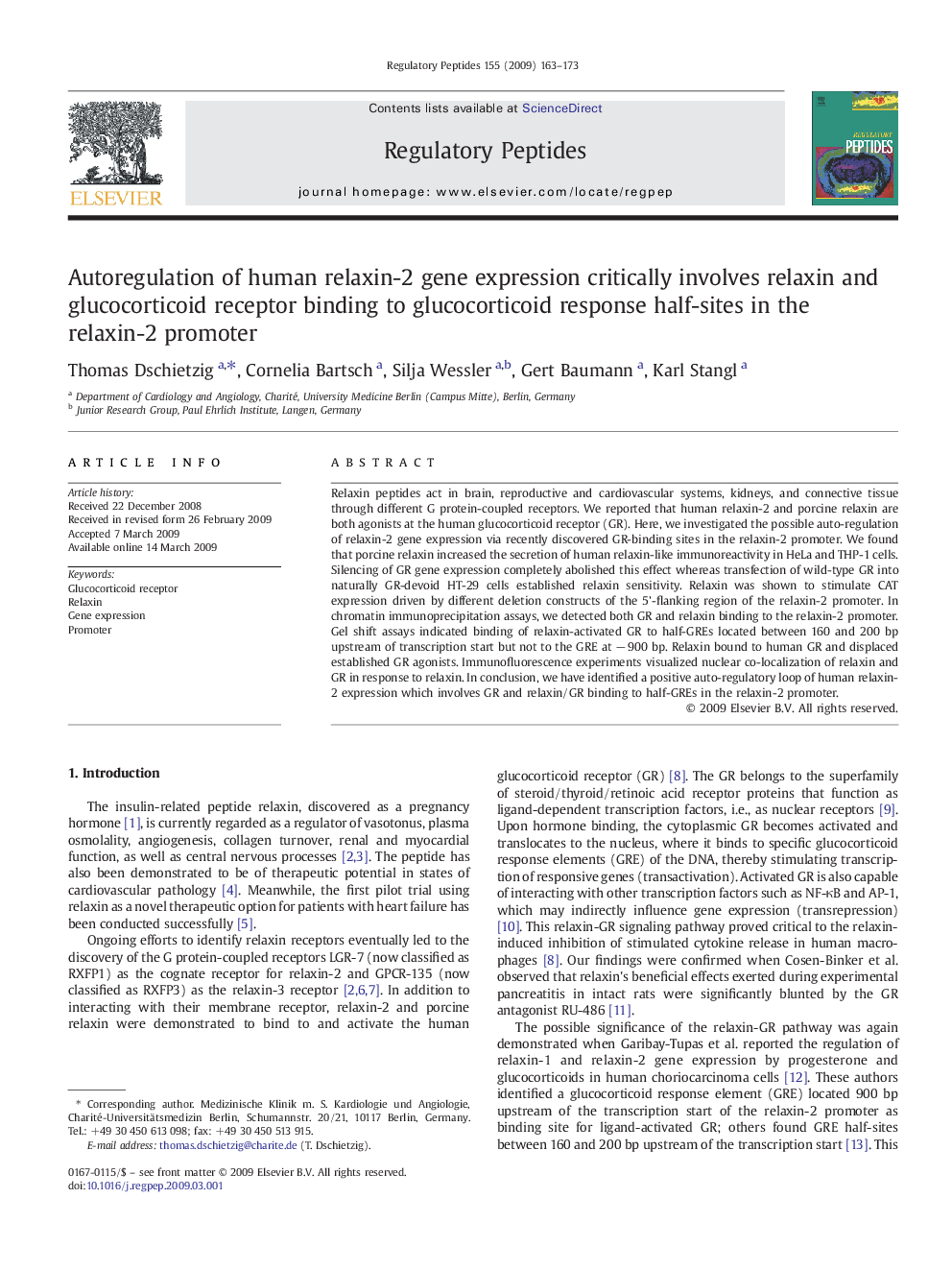| کد مقاله | کد نشریه | سال انتشار | مقاله انگلیسی | نسخه تمام متن |
|---|---|---|---|---|
| 2023106 | 1542430 | 2009 | 11 صفحه PDF | دانلود رایگان |

Relaxin peptides act in brain, reproductive and cardiovascular systems, kidneys, and connective tissue through different G protein-coupled receptors. We reported that human relaxin-2 and porcine relaxin are both agonists at the human glucocorticoid receptor (GR). Here, we investigated the possible auto-regulation of relaxin-2 gene expression via recently discovered GR-binding sites in the relaxin-2 promoter. We found that porcine relaxin increased the secretion of human relaxin-like immunoreactivity in HeLa and THP-1 cells. Silencing of GR gene expression completely abolished this effect whereas transfection of wild-type GR into naturally GR-devoid HT-29 cells established relaxin sensitivity. Relaxin was shown to stimulate CAT expression driven by different deletion constructs of the 5'-flanking region of the relaxin-2 promoter. In chromatin immunoprecipitation assays, we detected both GR and relaxin binding to the relaxin-2 promoter. Gel shift assays indicated binding of relaxin-activated GR to half-GREs located between 160 and 200 bp upstream of transcription start but not to the GRE at − 900 bp. Relaxin bound to human GR and displaced established GR agonists. Immunofluorescence experiments visualized nuclear co-localization of relaxin and GR in response to relaxin. In conclusion, we have identified a positive auto-regulatory loop of human relaxin-2 expression which involves GR and relaxin/GR binding to half-GREs in the relaxin-2 promoter.
Journal: Regulatory Peptides - Volume 155, Issues 1–3, 5 June 2009, Pages 163–173